| Srl | Item |
| 1 |
ID:
083302
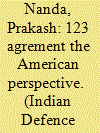

|
|
|
| 2 |
ID:
085273
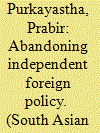

|
|
|
| 3 |
ID:
073792
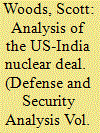

|
|
|
| 4 |
ID:
144001
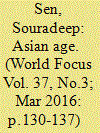

|
|
|
|
|
| Summary/Abstract |
India and Japan have shared a close relationship for a very long time. With the introduction of Buddhism in Japan in the sixth century, exchanges were believed to have started between the two nations. Buddhism brought hues of Indian culture to Japan and the process of cultural exchanges began. After the Second World War, the two countries signed a peace accord and established formal diplomatic relations in April 1952.
|
|
|
|
|
|
|
|
|
|
|
|
|
|
|
|
| 5 |
ID:
140494
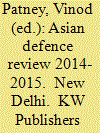

|
|
|
|
|
| Publication |
New Delhi, KW Publishers Pvt Ltd, 2015.
|
| Description |
vii, 240p.hbk
|
| Standard Number |
9789383649648
|
|
|
|
|
|
|
|
|
|
|
|
Copies: C:1/I:0,R:0,Q:0
Circulation
| Accession# | Call# | Current Location | Status | Policy | Location |
| 058273 | 355.03305/PAT 058273 | Main | On Shelf | General | |
|
|
|
|
| 6 |
ID:
077852
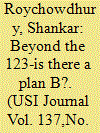

|
|
|
| 7 |
ID:
068350
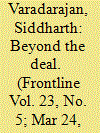

|
|
|
| 8 |
ID:
070846
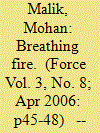

|
|
|
| 9 |
ID:
073374


|
|
|
| 10 |
ID:
076309
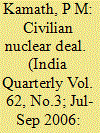

|
|
|
| 11 |
ID:
129103
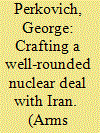

|
|
|
|
|
| Publication |
2014.
|
| Summary/Abstract |
A final nuclear deal with Iran should meet the underlying objective of the relevant UN Security Council resolutions since 2006: "the establishment of international confidence in the exclusively peaceful nature of Iran's nuclear programme."A final agreement could be codified and endorsed through a new resolution, which need not include all of the specific instrumental elements of past resolutions-for example, suspension of all uranium enrichment-if the council determines that the overall objective has been met. As the resolutions acknowledge, to be durable, such an agreement also must satisfy Iran's interest in having a purely peaceful nuclear program free from sanctions. The devilish challenge will be in the details. History will inform each party's requirements. The six-country group that has been negotiating with Iran, the so-called P5+1 (China, France, Germany, Russia, the United Kingdom, and the United States), will remember that Iran secretly had, at least until 2003, what appeared to be a dedicated, multifaceted program to acquire capabilities to produce nuclear weapons. Iran still has not cooperated fully with the International Atomic Energy Agency (IAEA) to clarify these activities and continues to expand sensitive fuel-cycle capabilities beyond any plausible civilian requirement. Iranian leaders, for their part, remember numerous episodes that reflect a U.S. determination to hasten an end to their regime.
|
|
|
|
|
|
|
|
|
|
|
|
|
|
|
|
| 12 |
ID:
089700


|
|
|
|
|
| Publication |
2009.
|
| Summary/Abstract |
The CTBT and FMCT had receded from international agenda in recent years. In India, too, these two compacts had retreated from the forefront of our cocerns. It is the Indo-US nuclear deal, with associated IAEA and NSG decision, that monopolized our attention for three years. No doubt both these issues figured during deal related discussions, but essentially in the bilateral India-US context.
|
|
|
|
|
|
|
|
|
|
|
|
|
|
|
|
| 13 |
ID:
133793
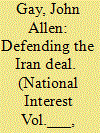

|
|
|
|
|
| Publication |
2014.
|
| Summary/Abstract |
Nuclear talks have yielded a framework that buys time for negotiation and reduces the risk of miscalculation on either side.
IT WAS LONG PAST MIDNIGHT IN GENEVA last November when the rumors began to fly. Iran and the world powers had just reached a deal on its nuclear program. An international crisis that had been building toward what seemed like war for more than a decade was now on the path to resolution. The deal, a haggard John Kerry confirmed, was real. It wasn't comprehensive-Iran would still be heavily sanctioned and heavily centrifuged-but it was unprecedented. All prior efforts had fallen apart.
|
|
|
|
|
|
|
|
|
|
|
|
|
|
|
|
| 14 |
ID:
165793
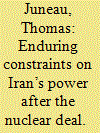

|
|
|
|
|
| Summary/Abstract |
THOMAS JUNEAU assesses the 2016 nuclear deal with Iran. He argues that critics of this deal incorrectly argued that it enhanced Iran’s position in the Middle East. He concludes that even under the deal Iran’s ability to gain power and to exert regional influence remained constrained.
|
|
|
|
|
|
|
|
|
|
|
|
|
|
|
|
| 15 |
ID:
154221
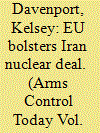

|
|
|
| 16 |
ID:
075373
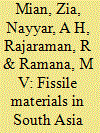

|
|
|
|
|
| Publication |
2006.
|
| Summary/Abstract |
The July 2005 U.S.-India joint statement represents a fundamental transformation of U.S.-India relations and at the same time a challenge to the disarmament and non-proliferation regimes. There is concern that the March 2006 separation plan proposed by India for demarcating its military and civilian nuclear facilities may allow a potentially rapid expansion of its capacity for fissile material production for weapons. In this analysis, we have assessed fissile material production capabilities in India and how they might change as a result of the U.S.-India deal. We look at current stockpiles of fissile materials in India and Pakistan and estimate the changing capacity for future fissile material production as India progressively places some of its heavy water reactors under safeguards. We assess India's uranium resource constraints and the additional weapons grade plutonium production in its unsafeguarded heavy water power reactors that would be made possible by imports of uranium allowed by the deal. We also estimate the weapons plutonium production from India's fast breeder reactor that is under construction and is to be unsafeguarded.
|
|
|
|
|
|
|
|
|
|
|
|
|
|
|
|
| 17 |
ID:
126183
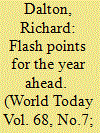

|
|
|
|
|
| Publication |
2012-13.
|
| Summary/Abstract |
Iran and the South China sea are top of the 2013 foreign policy agenda with rising tensions forcing them into the world spotlight.
|
|
|
|
|
|
|
|
|
|
|
|
|
|
|
|
| 18 |
ID:
142991
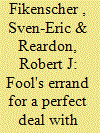

|
|
|
|
|
| Summary/Abstract |
After months of optimistic statements from negotiators, the P5+1 (the five permanent members of the UN Security Council plus Germany) and Iran still have not achieved a comprehensive agreement to resolve the nuclear dispute. However, the interim Joint Plan of Action (JPA) is—at this writing—still in force and both sides maintain that a comprehensive deal remains within reach.
|
|
|
|
|
|
|
|
|
|
|
|
|
|
|
|
| 19 |
ID:
080317
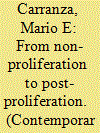

|
|
|
|
|
| Publication |
2007.
|
| Summary/Abstract |
How can the reversal in American policy toward South Asia from the Clinton administration's
strong condemnation of the Indian and Pakistani nuclear tests of May 1998
and the enforcement of American non-proliferation legislation to the lifting of sanctions
and the de facto recognition of India and Pakistan as nuclear weapon states be
explained? The Indian-American nuclear deal of March 2006/July 2007 is examined
here through alternative theoretical perspectives to explain the American reversal.
Defensive realism and social constructivism offer the strongest explanations for the
shift under the Bush administration. Both can be used to explain a deal that makes
major concessions in previous American policy. They also help draw attention to
the problems arising from a situation where the future of Indian-American relations
will depend not only on Indian but also American actions. The nuclear deal, it is concluded
here, could irreparably damage the Non-Proliferation Treaty while increasing
the danger of actual use of nuclear weapons in a future Indo-Pakistani war
|
|
|
|
|
|
|
|
|
|
|
|
|
|
|
|
| 20 |
ID:
144395
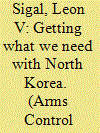

|
|
|
|
|
| Summary/Abstract |
While Washington’s chattering classes were all atwitter about North Korean nuclear testing and rocket launching and China’s backing for UN sanctions against Pyongyang in recent months, U.S. diplomats were tiptoeing to the negotiating table.
|
|
|
|
|
|
|
|
|
|
|
|
|
|
|
|